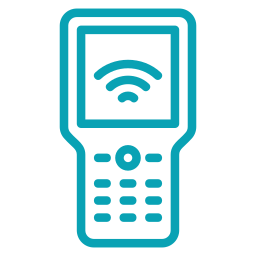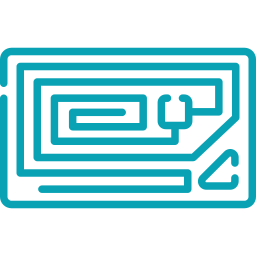Investing in RFID Technology
You’ve seen the advantages of RFID in laundry operations and decided to invest in hardware, software, tags and more. The sooner the capabilities and benefits of RFID in laundry are harnessed, the sooner you’ll see a return on that investment. Today, we’ll discuss strategies to potentially mitigate costs and expedite the conversion of inventory to RFID.
Benefits of Converting Inventory
- Ensuring dedicated inventory
- Producing the right quantity of product for weekly routes efficiently
- Tracking products/customers with the highest loss
- Maintaining transparency in product availability and enhancing customer satisfaction
- Streamlining billing and revenue processes
Whether you’re considering using RFID technology for any of these reasons, you’ll need to transition your non-RFID inventory to RFID-enabled inventory. Typically, laundry operations start by tagging garments, mats, and then inventory items from most to least expensive (table linen to sheets).
Converting existing products into RFID-Enabled inventory offers several approaches:
1. In-House Chipping

- Convenience: You can utilize current inventory.
- Flexibility: Flexibility in labor availability – staff can chip during downtime.
- Speed: It’s faster than waiting for the lifecycle of current inventory to conclude and then replacing.
- Cost: More cost-effective than replacing the entire inventory.

- Management: Chipping each linen piece demands rigorous organization. Each RFID tag must be accurately cataloged against the specific item it’s fixed to. For extensive inventories, this can be overwhelming.
- Labor: The method demands dedicated personnel trained in the technical and practical aspects of RFID chipping. This can be labor-intensive depending on inventory size.
- Capital: Purchasing the necessary equipment, including the RFID tags and the readers, can be expensive. Moreover, the maintenance and potential upgrades of the system can be a continuing cost.
- Floor Space: A dedicated space is required to carry out the chipping process, especially if you’re dealing with a large inventory. This can take up valuable real estate within your establishment.
2. Outsourcing
- Speed: It’s a quick process, with a 2-4 week lead time.
- Cost: It’s cost-effective in comparison to self-installation.
- Convenience: It’s a turnkey operation. There’s no need for additional laundry staff or management.
3. Purchasing New
There is one method to accelerate RFID implementation in this case:
4. Container Programs
- Flexibility: Flexibility in labor availability – staff can chip during downtime.
- Convenience: You can utilize current inventory.
- Speed: It’s faster than waiting for the lifecycle of current inventory to conclude and then replacing.
- Cost: More cost-effective than replacing the entire inventory.
Hybrid Solution
The ideal solution aligns with your laundry objectives. What’s your priority?
- Speed
- Cost-effectiveness
Consider these combined options:
- Quick table linen conversion, outsourced.
- In-house inventory modification for smaller items.
- New acquisitions for terry products.
When considering the more expensive RFID-enabled products, it becomes more costly not to have items chipped than it would for the initial investment.
In the evolving world of laundry operations, it’s becoming clear that RFID-enabled textiles are the future of the industry. This technology allows businesses to streamline operations, ensure accuracy, and ultimately drive a stronger ROI.
The approaches I’ve outlined offer solutions based on individual needs based on inventory sizes and investment capability. Whether opting for self-installation, outsourcing, or considering a hybrid model, the goal is achieving operational efficiency and maximizing your investment.
As you embark on this RFID journey, it’s essential to weigh the pros and cons of each approach and choose a path that best aligns with your operational goals and financial considerations. The future of laundry operations is undeniably intertwined with RFID technology, and making informed decisions now will set the stage for success in the years to come.




